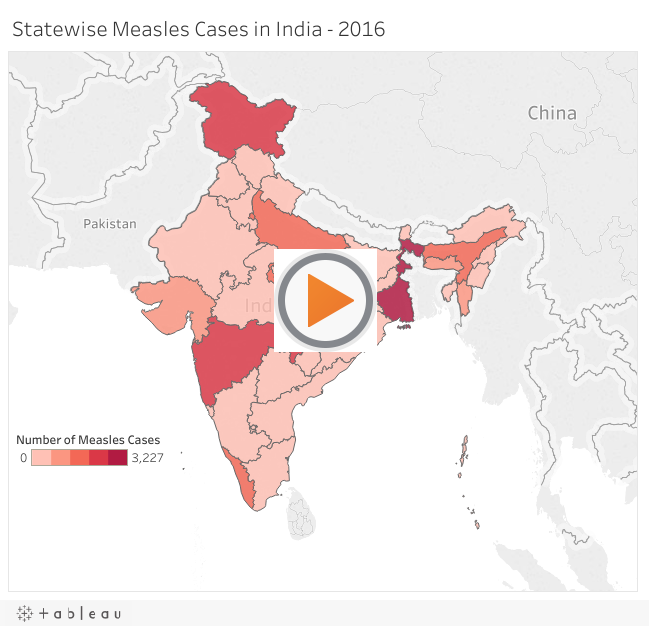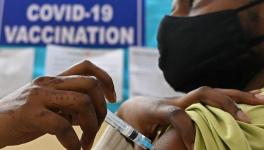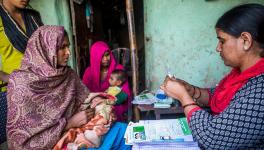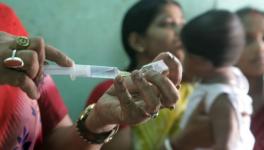Can India Eradicate Measles by 2020?
According to recent data released by the Lok Sabha, India has the third highest number of cases of Measles in the world. In 2016, 21,697 cases of Measles were recorded, which puts us ahead of only Mongolia(28,710) and China(25,584).
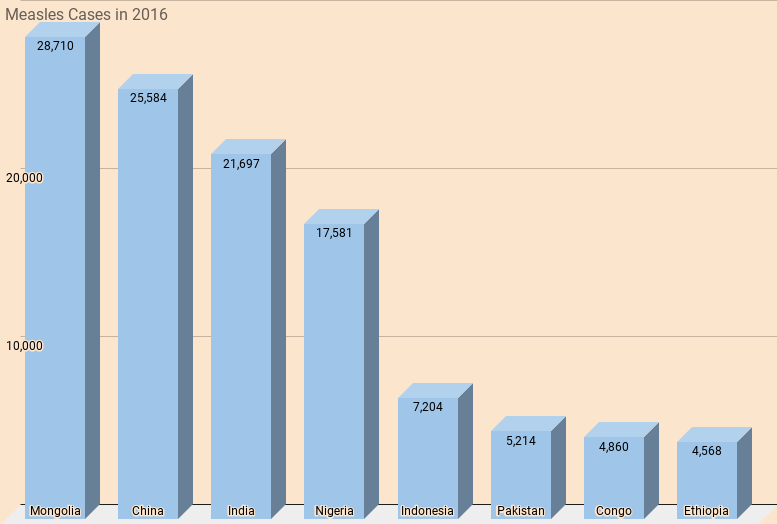
Measles is a viral infection of the respiratory system and can spread through contact with infected mucous and saliva, and also through air when an infected person coughs or sneezes. It has led to many fatalities amongst infants, children, as well as adults.
India introduced the Measles vaccination in its Universal Immunisation Programme (UIP) in 1985, but it continued to be a single dose vaccination till 2008. The amount of population covered also remained low in this program. Because of this, Measles continues to be reported in large numbers all across India.
The vaccination needs to be given at least twice to infants, first at the age of 9 months, followed by one at 16 months, for the immunisation to be effective. People who have received only one dose of the vaccine are still susceptible to catching the disease. In a case-based measles surveillance conducted in Pune, it was observed that in approximately 40% of confirmed measles cases, the patient acquired the disease despite being administered one dose of measles vaccine. Thus, a single dose of measles vaccine is not sufficient to protect the general population. In the past, coverage for the second dose has remained dismally low, below 50% of the population. In 2013, the average coverage for the Measles vaccine was about 89% for the first dose, and only 47% for the second dose.
According to WHO, for the immunisation to be successful, 93% to 95% of the population has to be vaccinated. Only then can the population form a ‘herd immunity’. Till now, India has not been able to achieve this level of coverage under Universal Immunization Programme (UIP), which was launched in 1985. Now, India, along with 10 other WHO South-East Asian countries, has planned to eradicate Measles and control rubella/congenital rubella syndrome (CRS) by 2020. As a first step, India has launched a nation-wide Measles-Rubella (MR) Vaccine campaign in February this year. The drive aims to cover 41 crore children.
The objective of the MR vaccine campaign is to cover the entire country in a span of 18 months, after which the MR vaccine will be made a part of the UIP. In the first phase, five states were covered: Tamil Nadu, Karnataka, Goa, Lakshadweep, and Puducherry. The second phase began in August and will cover eight states and union territories – Andhra Pradesh, Chandigarh, Dadra & Nagar Haveli, Daman & Diu, Himachal Pradesh, Kerala, Telangana and Uttarakhand.
But the programme has already run into problems and this might undermine India’s ability to achieve the goal of eliminating the disease by 2020. In Tamil Nadu, there was a report that said only about 50% of the children had received vaccinations, much less than the requirement of 93-95%. In Bengaluru, the lack of awareness around the government’s immunity drive made parents worry about the need and safety of the vaccination, leading them to file an online petition against the vaccine campaign. In Karnataka, comments by the Union Minister of State gave ammo to false campaigns against the very idea of vaccinations, adversely affecting the vaccination coverage of Muslim kids in particular.
There has also been no particular increase in the health budget for this program. The funds for this separate campaign are coming from the already underfunded health budget, and this is bound to have an impact on regular public healthcare services.
The Pulse Polio Initiative, that was launched in India in the year 1995, aimed to eradicate Polio by 2002. This was following similar directives from WHO to eradicate Polio worldwide by the year 2000. However, due to consistently low vaccination coverage rates, it could only be eradicated in India by the year 2011. The 95% coverage threshold could not be achieved, and the small pockets where polio remained kept reintroducing the disease to the larger population. Similar problems have been seen in administering the Measles vaccine in the past.
Dr. Amit Sengupta, convener of the India chapter of the People’s Health Movement, said that covering up to 90% of the population is possible through campaigns like the Pulse Polio Initiative and MR Vaccine Campaign, but reaching the last 10% is the hardest part. The last 10% can only be covered if there is a public health system that people trust. The system and awareness should be such that people bring their children themselves to get vaccinated, instead of the government chasing them.
World over, India’s efforts to reduce mortality due to Measles, have had a much smaller success rate compared to other nations. India achieved an estimated 51% reduction in mortality, compared to the 85% in African regions, 80% in the Western Pacific regions, 79% in European regions, and 91% in South-East Asian region, excluding India.
A wave of vaccinations alone isn’t enough to eradicate Measles completely by 2020. The vaccine cover has to be 95% during the campaign and the immunisation program that will follow it. The surveillance of the two diseases, Measles and Rubella, also has to be ramped up significantly, along with monitoring outbreaks and having complete preparation to handle outbreaks. There has to be a rapid response to outbreaks with immediate vaccination of all children in the affected community and timely treatment of cases everywhere in the country. These measures can only be achieved by an overall improvement in the public health system of the country, coupled with adequate funds for public health.
Disclaimer: The views expressed here are the author's personal views, and do not necessarily represent the views of Newsclick.
Get the latest reports & analysis with people's perspective on Protests, movements & deep analytical videos, discussions of the current affairs in your Telegram app. Subscribe to NewsClick's Telegram channel & get Real-Time updates on stories, as they get published on our website.









